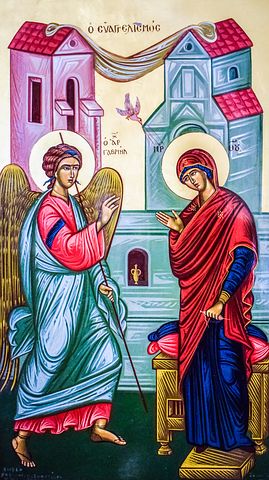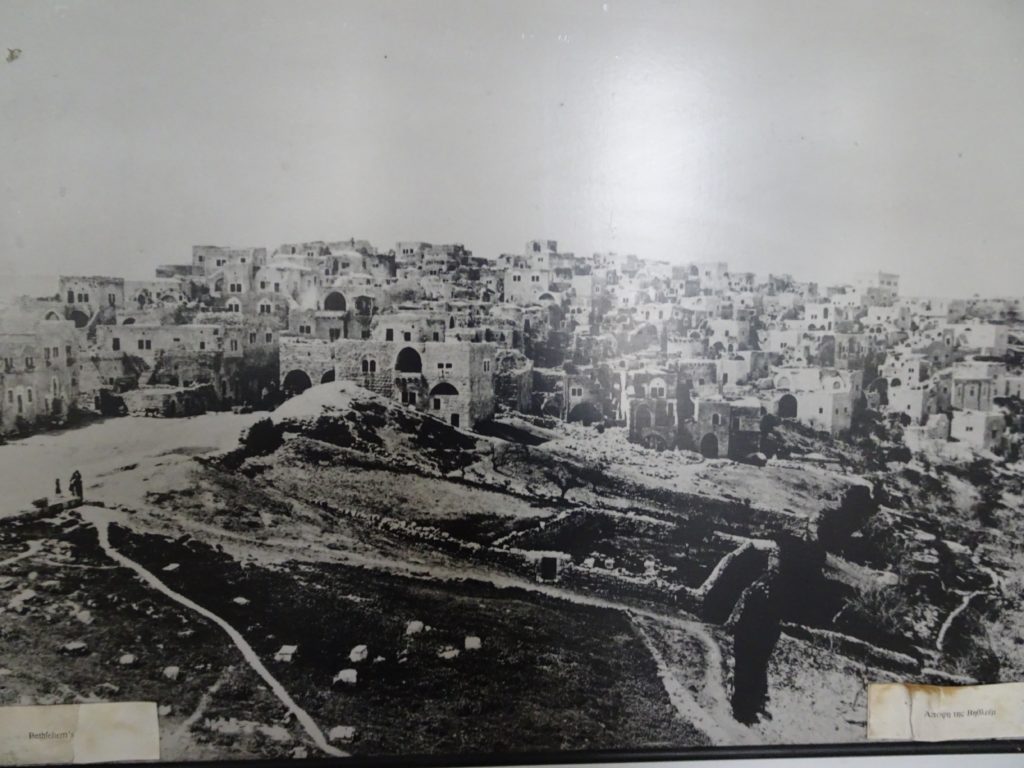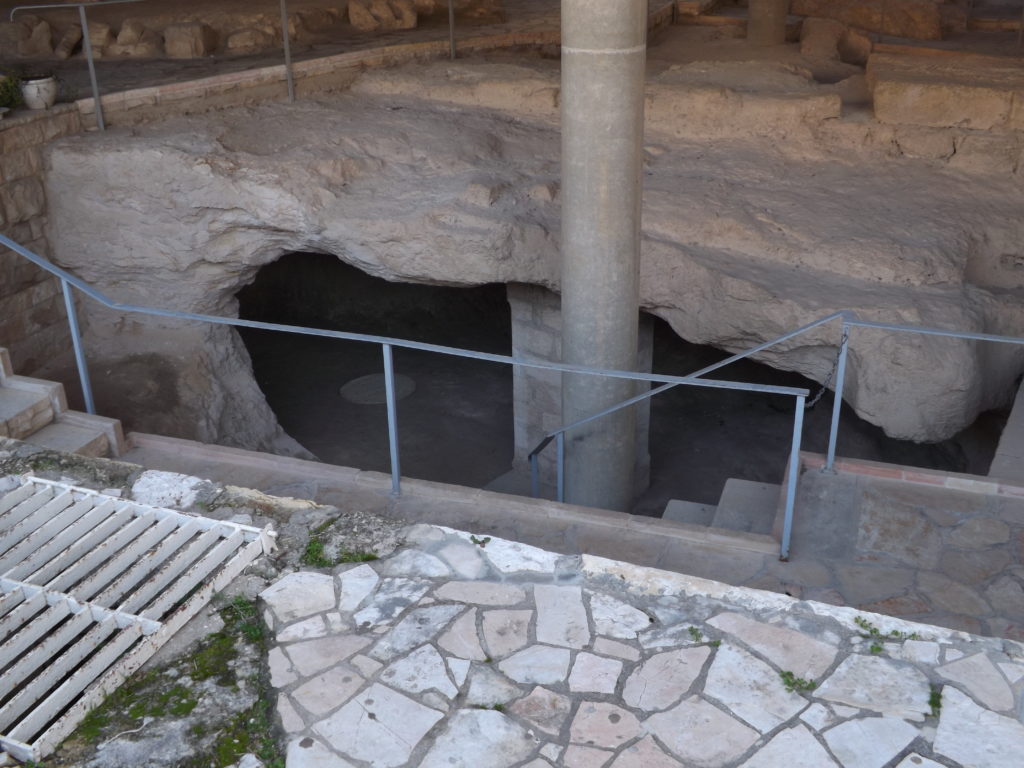
Introduction
We all have lots of ideas about Christmas. What evidence is there of any of the story? In the film “Love Actually” (2003) Karen’s young niece Daisy was delighted to have a key part in the local Nativity Play – she was First Lobster!
Were there actually lobsters at the stable when Jesus was born? Was there even an inn-keeper? What do we know about the birth of Jesus and does the story stack up historically? What’s the evidence?
Why December 25th?
Christmas was not celebrated as a Christian feast until the 4th century. In the third century there were various guesses as to the date when Jesus was born March, April, May, November and January. The first recorded celebration was in 336, on 6th January, which is the when the eastern Orthodox churches still celebrate it. By 400 it had come to be generally accepted and the date chosen in the Western church was December 25th, traditionally the shortest day of the year.
it was probably chosen for its symbolism, and not in order to take over the pagan festival of the “Day of the Birth of the Unconquered Sun”, because that had only been established by the emperor Aurelian in 274.
It is more likely that Jesus was born in the summer or autumn, so that animals could be kept outside, as in the shepherds “keeping watch over their flocks by night” (Luke 2.8). In winter Bethlehem can be very cold and animals would have been kept inside. I have seen snow lying on the ground in January.
What does the New Testament say?

Rylands Library fragment of John 18, c. 125-150 AD
Virtually all the New Testament was written in the first century. The Ryland fragment of John 18 in the library at Manchester is proof. But that does not help with Christmas, because most of the New Testament writers do not mention the birth of Jesus.
Mark does not mention it, though he calls Jesus “son of Mary”.
John does not mention it, and he calls Jesus “son of Joseph”.
Paul only alludes to it once, saying that he “was descended from David according to the flesh” (Romans 1.3)
The only sources for the Christmas story are the Gospels of Luke and Matthew. For me Matthew is a slightly special case, so I will concentrate mostly on Luke.
How reliable is Luke?
Luke starts his gospel by telling us how he wrote it:
“Since many have undertaken to set down an orderly account of the events that have been fulfilled among us, just as they were handed on to us by those who from the beginning were eyewitnesses and servants of the word, I too decided, after investigating everything carefully from the very first, to write an orderly account for you, most excellent Theophilus, so that you may know the truth concerning the things about which you have been instructed. “ (Luke 1.1-5)
In other words, it is work of perspiration rather than inspiration.
I think he wrote it about 60 AD, during the two years that Paul was kept in prison in Caesarea. (Acts 24.27) I argue this in my Bible blog “Can we trust Luke?” In it I show that he is reliable in his use of Mark as a source, apart from very minor details. He describes the paralysed man being let down through the roof “through the tiles”. (Luke 5.19), but that describes a Greek house rather than a Palestinian house. See
https://www.bibleinbrief.org/2018/02/01/cn-trust-luke-part-1 and
But can we trust him over the stories of the birth of Jesus? When Luke wrote it was over 60 years in the past.
The 12 year old Jesus in the Temple
There is a clue. In chapter 4.21-end Luke tells of an incident when Jesus was 12 and was taken to the Passover celebration in Jerusalem – and got left behind! Mary and Jospeh only realised after they had travelled a day with the rest of the family contingent. They rushed back and after 3 days found him taking part in discussions in the temple. Mary asked why he had done this. Jesus replied, “Didn’t you know I must be in my Father’s house?”

There is no miracle in the story, just an everyday tale of a family’s anxiety. It seems to me that the only possible source of the story is Jesus’ actual family. Perhaps Mary herself. Perhaps another family member. Jesus’ brother (or possibly his cousin) James was head of the church in Jerusalem till his martyrdom in 62, so he or his brothers and sisters could have carried the story.
A Jewish Jesus?
Luke does have an agenda in the first two chapters. He wants to make the start of his gospel as Jewish as possible, with explicit links across to the Old Testament. So his story starts with a priest Zechariah offering incense in the Temple, and an angel, or messenger from God, appearing and promising him a son. Two major psalms/hymns are put into the mouths of Mary (the Magnificat 1.46-55), and of Zechariah (the Benedictus, 1.68-79) It was standard practice for Greek historians to give their characters speeches to express what was in their minds at the time. Luke, it seems to me, provides two psalms or hymns which may reflect the time of the Maccabee revolt. What is clear is that if you take these out, the narrative flows without a break.
He concludes the infancy narratives by stressing his Jesus’ Jewishness, first in his circumcision and naming on the eighth day (2.21), and his presentation in the Temple forty days after the birth as a first-born dedicated to God (2.2-39). Luke ends the section with “When they had finished everything required by the law of the Lord…” (2.39)
I am reminded of the story of a Russian woman who went to her priest with a problem:
Woman: I keep wondering, was the Lord Jesus Jewish?
Priest: Dear lady, our Lord is much greater than that. He transcends all the labels we could put on him.
Woman: But his mother Mary, was she Jewish?
Priest: Unfortunately, yes.
Luke would have been appalled.
Are the stories believable?
The Christmas stories we know and love are full of dramatic details. like the amazing appearance of the angel Gabriel, the crowded hotels in Bethlehem and the last-minute use of a stable. In fact the story, though still miraculous, is much more ordinary.
Second, the angel, or messenger, (the word in Greek is the same), looked like an ordinary person. How do we know? Because when he greeted Mary and said, “Greetings, favoured one! the Lord is with you”, Mary was perplexed at his words. Had he looked like all the paintings we have of that encounter, she would have been perplexed at his wings!

First, we are told that the angel Gabriel’s visit was “In the sixth month”. What sixth month? It was the sixth month of the pregnancy of Mary’s aunt Elizabeth (1.24)
Third, what did Mary after the visitation? She walked about 100 miles to Judaea to check up on her aunt Elizabeth. It probably took her a week. She found that Gabriel had been telling the truth. Not only so but Elizabeth was filled with the Holy Spirit and prophesied over her, “Blessed are you among women and blessed is the fruit of your womb…” (1.42-45)
She then stayed with Elizabeth and Zechariah for three months, leaving just before their son was born and going back to Nazareth – another week’s walk. She may have wanted to avoid the gathering of neighbours and relatives because she was just beginning to show a bump.

Back in Nazareth she would have met up again with her betrothed Joseph. My guess is that they went together to Bethlehem soon after, to stay in Joseph’s family home. Luke simple says that Mary’s time to give birth was “while they were there”. He gives on indication of how long they were there.
I think the above is likely, because in the view of many scholars there was no Roman registration at the time of Jesus’ birth.
When was Jesus born
At 2.1-2 gives a precise year for Jesus’ birth, at the first registration under Quirinius as governor of Syria. Unfortunately that was in 6-7 AD. In 1.5 Luke places the story in the reign of Herod the Great, who died in 4 BC. It is possible that there was a registration earlier, but that is unlikely because until 6 AD Judaea was a client kingdom, theoretically independent. In 6 AD the Roman emperor deposed the Jewish king Archelaus because he was such a bad ruler, and took over direct control under a Roman procurator. It was then that a census was held, which was so unpopular that it sparked off a serious rebellion led by Judas the Galilean (Acts 5.37) and created the ultra-nationalist Zealot party.
At that time there were no newspapers or calendars, or printed books. It was quite hard to keep track of dates. So Luke is quite vague as to Jesus’ age when he began preaching. He was “about thirty years old” (Luke 3.23) My guess is that Joseph and Mary did go down to Bethlehem at the time of the registration, but that got confused with an earlier stay at Bethlehem while Mary was pregnant.
No room at the inn?
A key character in Nativity plays is the hard-hearted innkeeper who will not give Mary a bed. However, that all comes about because of a simple mistranslation. The word used for ’inn’ (kataluma) is quite different from the word used in the parable of the Good Samaritan (pandoxeion). It is in fact the same word used for the upper room in the story of the Last Supper. The NIV now translates it as guest room.

In fact it was the ordinary living quarters of a Palestinian house which would have been built over a cave to keep the animals warm in winter. I have seen just such an ancient house in Taybeh on the West Bank. The stable was simply the most private place in the house for Mary to give birth in. If you visit the grotto in the church of the Nativity in Bethlehem, it is possible to find a whole series of caves which were used as dwellings, just as in Nazareth as well. If it is an indication of anything it is that Jospeh and Mary were ordinary working class folk with ordinary working class housing. The photo shows a cave in Nazareth which was used a typical home at that time.
The same moral can be drawn from the angels’ appearance to nearby shepherds, who were definitely on the lower ranks of society.
What about Matthew?
Matthew which I think was written later than Luke and certainly after Mark, has three passages about the birth of Jesus.
a) 1.1-17 is a long genealogy showing the ancestry of Jesus through the long line of kings of Judah; 14 generations from Abraham to David, 14 generations form David to the destruction of Jerusalem in 586 BC, and 14 generations from that event to the birth of Christ. But he misses out a couple of kings so it does not quite fit. However, Matthew 1.1. is the only place in the Bible where Jesus is called “son of Abraham” as well as “son of David”. Nailing his Jewish colours to the mast at the outset.
b) 1.18-25 The angel’s message to Joseph
c) 2.1-18 The coming of the wise men and the family’s flight as refugees to Egypt
The angel’s message to Joseph
I studied Matthew as part of my theology degree at Durham, and discovered that Matthew is a very smooth writer. His style is smooth and has no jagged edges. Apart from two verses: 1.18 and 2.1. This persuades me that these two infancy stories were added after the rest of the gospel was written. But that does not mean that they are not true. The story of the angel’s message to Joseph I think is an early tradition, because we can see how the quotation of Isaiah 7.14 has been inserted into the narrative, so the end of the story “When Joseph woke from sleep…” is usually left out of readings at carol services. It is psychologically likely that Joseph needed some supernatural assurance, but we cannot go further than that.
The visit of the wise men
There is no independent evidence to support the story of the wise men. All we can say is that the details are plausible
Persian astrologers, or magi, did try to forecast future events, and later they did visit the emperor Nero because their reading of the stars told them that an heir had been born.
Magi, i.e. pagan astrologers, are unlikely to have been invented by sound Jewish Christians as part of the Christian story.
Herod was a paranoid tyrant. He killed his own son, and at the end of his life he ordered all the village chiefs to be gathered in the amphitheatre in Jerusalem and killed when news of his, Herod’s death became known, so that there would be large-scale mourning at his passing. The killing of young children under two in one small village was well within his capabilities.
There was a significant astronomical event in 7 BC, when Jupiter (the planet of kingship) and Saturn (the planet of time) approached each other three times in the course of one year. The star may refer to other astronomical events. There may be something in it.
Summary
Taking the two accounts together, there are five things of which there is agreement:
1 Jesus was born in Bethlehem
2 He was conceived directly through the Holy Spirit while his mother was still a virgin. (If you are Muslim you must believe this because it is in the Koran).
3 His parents were Mary and Joseph
4 He was given the name Jesus by an angel before he was born. Jesus is the Greek form of Yeshua or Joshua, meaning God saves.
5 He grew up in Nazareth.
I think it is quite a lot to be going on with.
Why celebrate Christmas then?
If Jesus was born in the summer or autumn, why celebrate his birth on the shortest day of the year? Because it neatly sums up the Christian message, as declared in the opening of the Gospel of John (John1.3-4) which is read at every Midnight Mass:

What has come into being in him was life, and the life was the light of all people. The light shines in the darkness, and the darkness did not overcome it.
